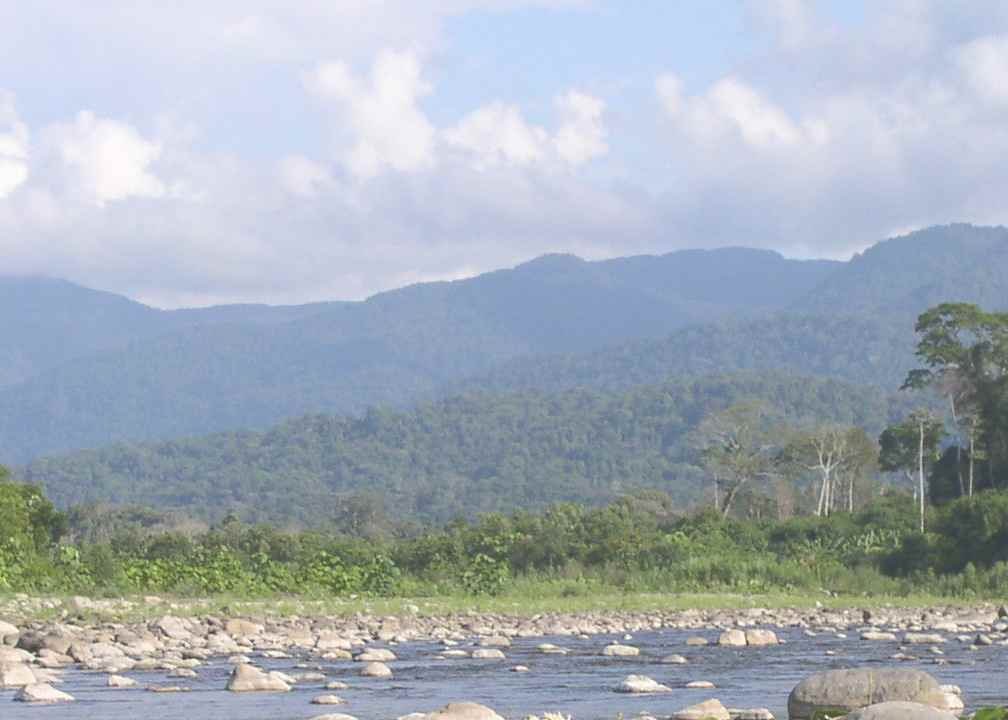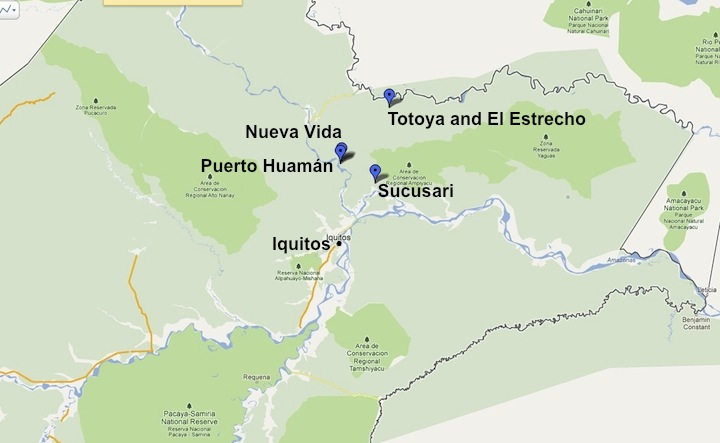 Cabeceras Aid Project
Cabeceras Aid Project Cabeceras Aid Project
Cabeceras Aid ProjectLast updated: September 7, 2017
El código ISO 639-3 para este idioma es: ore
Otros nombres del idioma son: Maihiki, Maijiki, Maihuna, Maijuna, Orejón, and Coto. Dado que los nombres Orejón y Coto son peyorativos y por consiguiente no los usamos.
 Máíj
Máíjìkì es el nombre del idioma hablado por el pueblo máíjùnà. Hay cuatro comunidades máíjùnàs, todas en la Región Loreto del Perú: Nueva Vida, Puerto Huamán, Sucusari y San Pablo de Totolla (Tótóyà).
Hay aproximadamente 400 personas de la etnia máíjùnà y aproximadamente 80-90 personas que hablan el idioma. La gran mayoría de los hablantes tiene más de 40 años de edad. Este hecho indica que la transmisión natural de la lengua desde padres a hijos dejó de hacerse cerca de tres décadas atrás. Por estas razones, el idioma máíjìkì es considerado un idioma altamente en peligro de extinción.
En 2006, Lev Michael y Christine Beier, trabajadores de campo de la ONG Cabeceras, iniciaron una amistad con las comunidades máíjùnàs de la cuenca del río Napo y ofrecieron una colaboración en la documentación y revalorización del idioma.
Desde 2008, el Proyecto Máíjìkì tiene sede en el departamento de Lingüística en la University of California, Berkeley, bajo la dirección del Dr. Lev Michael y la Dra. Christine Beier.
En julio 2009, la Federación de Comunidades Nativas Maijunas, FECONAMAI, Cabeceras Aid Project, y otros interesados firmaron un Convenio para desarrollar el ''Proyecto de Conservación Biocultural de Pueblo Indígena Maijuna'', a base del cual estamos ejecutando el ''Proyecto Máíjìki".
En 2010, un equipo de cuatro linguistas — Dr. Lev Michael, Dra. Christine Beier, Mg. Stephanie Farmer y Gregory Finley — llevaron a cabo la primera fase de trabajo de documentación linguística en Nueva Vida, entre 29 de junio y 14 de agosto 2010. Durante esta fase, el equipo produjó un borrador de un diccionario con 1.000 entradas.
En 2011, un equipo de cuatro linguistas — Dr. Lev Michael, Dra. Christine Beier, Mg. Stephanie Farmer y Mg. John Sylak — llevaron a cabo la segunda fase de trabajo de documentación linguística en Nueva Vida, entre 20 de junio y 11 de agosto 2011. Durante esta fase, el equipo produjó un borrador de un diccionario con 1.600 entradas.
En 2012, un equipo de seis linguistas — Dr. Lev Michael, Dra. Christine Beier y Mg. Stephanie Farmer con las estudiantes Amalia Skilton, Kelsey Neely y Grace Neveu — llevaron a cabo la tercera fase de trabajo de documentación linguística en Nueva Vida, entre 11 de junio y 11 de agosto 2012. Durante esta fase, el equipo produjó un borrador de un diccionario con más de 2.000 entradas, una colección preliminar de textos, y una breve película en máíjìkì (hacer clic aquí para tener acceso a los productos).
En 2013, un equipo de linguistas llevó acabo la cuarta fase de trabajo de documentación linguística en Nueva Vida, y el último año de investigaciónes de campo apoyados por el NSF. Durante esta fase, el equipo produjó un nuevo borrador mejorado del diccionario y una breve película en máíjìkì (hacer clic aquí para tener acceso a los productos).
Desde 2014 hasta ahora, Lev Michael y Christine Beier vienen mantenimiendo la amistad y apoyando al pueblo máíjùnà con visitas breves auspiciados por la ONG Cabeceras, hasta el día en que pueden conseguir un financimiento y abrir un especio laboral para volver a los trabajos de investigación y el apoyo el idioma.
Para ver los productos del trabajo de campo hasta ahora: hacer clic aquí.
The ISO 639-3 code for this language is: ore
This language is also known as Maihiki, Maijiki, Maihuna, Maijuna, Orejón, and Coto. Because the names Orejón and Coto are insulting, we do not use them.
 Máíh
Máíhìkì is the name of the language spoken by the Máíhùnà people. There are four Máíhùnà communities, all located in the state of Loreto in Peru: Nueva Vida, Puerto Huamán, Sucusari, and San Pablo de Totolla (Tótóyà).
There are about 400 máíhùnà individuals and about 80-90 speakers of the language. The great majority of the speakers are over 40 years old. This fact indicates that the natural transmission of the language from parents to their children ceased about three decades ago. For these reasons, máíhìkì is considered a highly endangered language.
In 2006, Lev Michael and Christine Beier, fieldworkers for Cabeceras Aid Project, initiated a friendship with the Máíhùnà communities of the Napo River and offered to collaborate on the documentation and revitalization of the language. In July 2009, the federation of Máíhùnà communities, FECONAMAI, Cabeceras Aid Project, and other interested parties signed an agreement to carry out the ''Proyecto de Conservación Biocultural de Pueblo Indígena Maijuna (The Máíjùnà Biocultural Conservation Project)'', of which the ''Máíhìkì Project'' is part.
In 2010, a team of four linguists — Lev Michael, Christine Beier, Stephanie Farmer, and Gregory Finley — successfully carried out the first phase of linguistic documentation work in Nueva Vida, between 29 June and 14 August 2010. During this period, the team produced a draft of a 1,000-word dictionary.
In 2011, a team of four linguists — Lev Michael, Christine Beier, Stephanie Farmer, and John Sylak — successfully carried out the second phase of linguistic documentation work in Nueva Vida, between 20 June and 11 August 2011. During this period, the team produced a draft of a 1,600-word dictionary.
In 2012, a team of six linguists — Lev Michael, Christine Beier, Stephanie Farmer, Amalia Skilton, Kelsey Neely, and Grace Neveu — successfully carried out the third phase of linguistic documentation work in Nueva Vida, between 11 June and 11 August 2010. During this period, the team produced a draft of a 2,000-word dictionary, a preliminary text collection, and a short movie in máíhìkì (click here to see access these products).
The Máíhìkì Project is based at the University of California, Berkeley, under the direction of Dr. Lev Michael, and is financed by the National Science Foundation, Grant #BCS-1065621 (2010-2013), and by Cabeceras Aid Project. The proyect is co-directed by Dr. Christine Beier of Cabeceras Aid Project.
LINKS:
Convenio con FECONAMAI (Federación de Comunidades Nativas Maijunas) para el Proyecto de Conservación Biocultural del Pueblo Indígena Maijuna firmado 19 julio 2009 en Sucusari.
Click to to see 2009 photo album.
Click to see 2012 photo album.
To see the products of our fieldwork thus far: click here.
